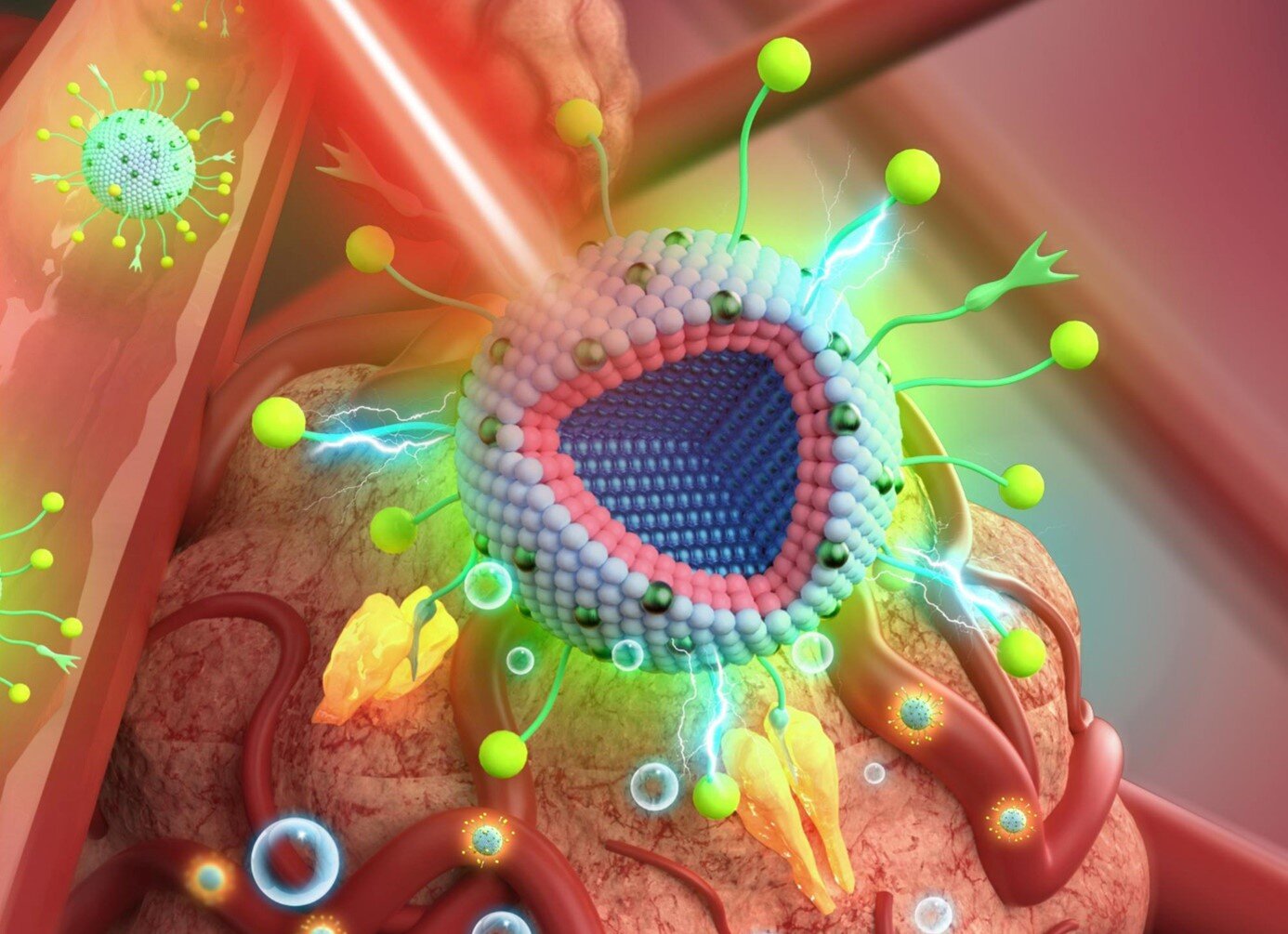Novel nanoparticles with potential for enhanced deep tumor therapy
Date: 11.3.2022
Researchers Dr. Yansong Feng and Prof. Hong Zhang at the Van 't Hoff Institute for Molecular Sciences at the University of Amsterdam (UvA) have designed and synthesized novel multi-layered, multi-functional nanoparticles that enable a combination of radiotherapy and photodynamic therapy for deep cancer tissue.
 An initial pre-clinical evaluation of the particles has demonstrated their therapeutic potential. A patent is pending, and the university is now seeking partners for further development or licensing.
An initial pre-clinical evaluation of the particles has demonstrated their therapeutic potential. A patent is pending, and the university is now seeking partners for further development or licensing.
The novelty of the nanoparticles is that they enable radiotherapy and photodynamic therapy to be combined while using only X-rays. The particles also facilitate imaging of deep tissue, allowing for the image-guided targeting of the combined therapy.
In photodynamic therapy, visible light is used to activate photosensitizers that release radical oxygen species to destroy cancer cells. It attacks different parts of a cancer cell compared to conventional radiotherapy using X-rays. The combined use of both therapies enhances the destruction of tumorous tissue and often reduces the required X-ray dose.
However, because photodynamic therapy is triggered by light, it is difficult to use it to treat cancer tissue located deep inside the body. To do so requires an invasive procedure such as endoscopy using an optical fiber. With X-rays there's no such problem. They easily penetrate the body and are focused in such a way that they can do their devastating work at the tumor site.























